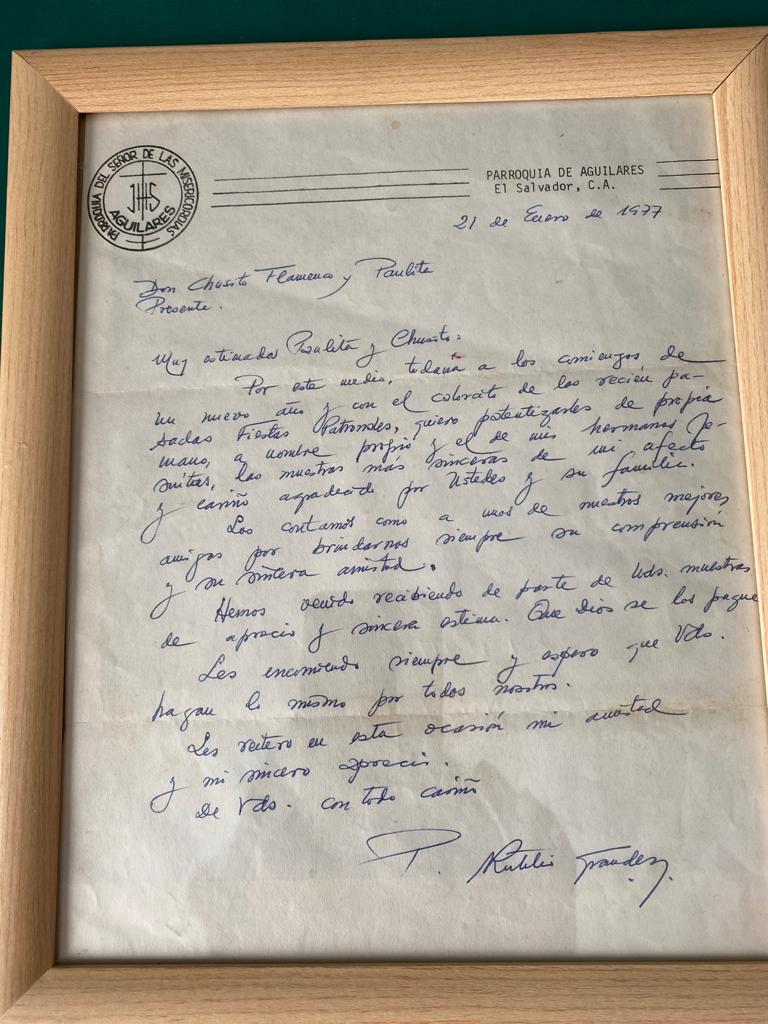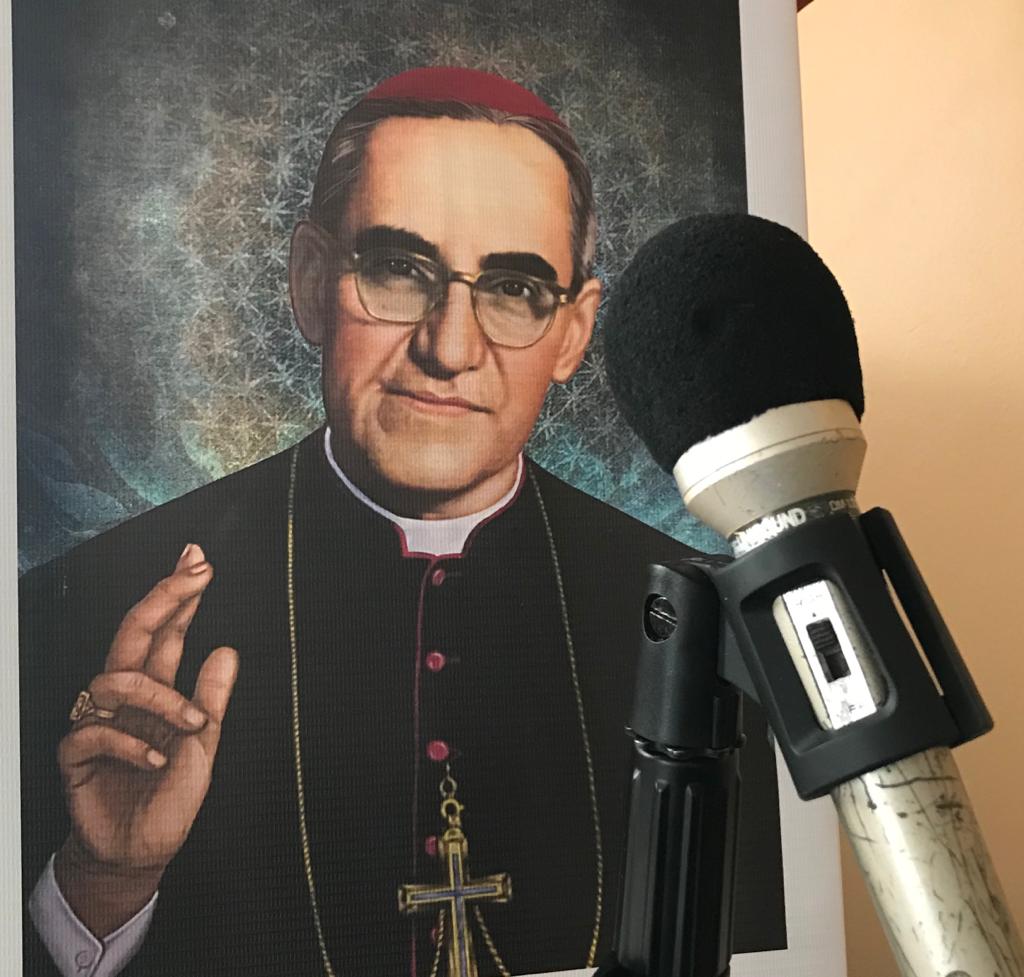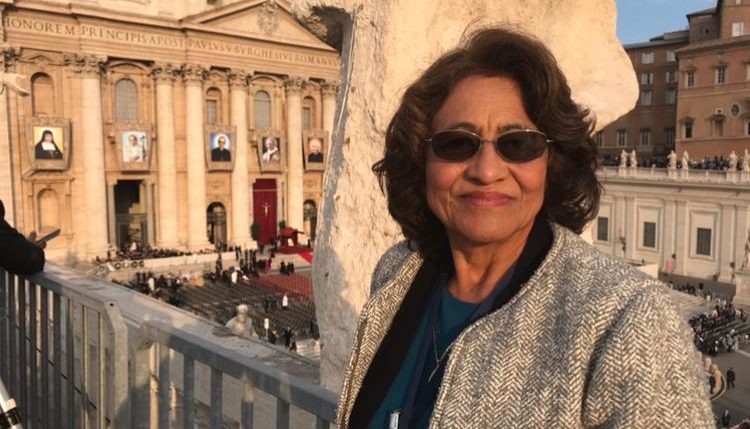Pope Francis in his teachings frequently reminds us that the primary vocation of all the baptized is holiness. The pontiff goes further when he affirms that even without realizing it, we live with "the saints next door": parents, men and women who work to bring home the bread, the sick, the religious; ordinary people who with their work, in the ordinary things of life, in their own states of life strive to give glory to God with their lives.
It is about "the holiness of the Church militant. That is the holiness of the next door, of those who live close to us and are a reflection of God's presence" (Gaudete et Exultate, 7). Indeed, we live with many of these saints next door. However, there are few who can say with certainty that they lived and lived with canonized saints and blessed. One such person is Maria Hilda Flamenco de Gonzalez, born in El Salvador and living with her family in Los Angeles, California, for the past 19 years.
Maria Hilda, "Mama Hilda" as she is affectionately called, was born and lived in Aguilares, where she met Rutilio Grande in 1972 and later St. Oscar Arnulfo Romero, Archbishop of San Salvador in 1977. Years later Divine Providence allowed Maria Hilda to be present at the canonization of her Archbishop Oscar Romero in 2018 and then at the beatification of her parish priest Rutilio Grande in January 2022.
After visiting El Salvador to attend the beatification of Father Rutilio Grande in January 2022, Maria Hilda grants Omnes an exclusive interview from Los Angeles, California.
Maria Hilda, what was the area where the parish of Blessed Rutilio Grande was located like?
-My homeland is Aguilares, Department of San Salvador, a region dedicated to commerce because it is surrounded by four sugar mills. At that time there were a few landowners and most of the population was dedicated to planting sugar cane, growing corn, cotton, sugar processing and transportation. Despite the long and arduous workdays, the vast majority of the population lived in extreme poverty.
How and why did you meet Father Rutilio?
-We were parishioners of the parish of Aguilares, where Father Rutilio Grande was. That is why we had the joy of knowing him closely. From the beginning we could see in his work, his dedication to the mission and to the formation of base communities. Usually every month, we brought to the parish "the first fruits" which means to provide the parish house with the necessary provisions. That is how we got to know Father Rutilio better. From the beginning we were struck by his simplicity, his humility, his social sensitivity and his poverty. He and his companions preferred to help people rather than keep even the most necessary things for themselves.
Rutilio's pastoral mission took place in a difficult situation, both because of the poverty of the area and the austere conditions of the parish house and the social and political conflict of El Salvador in the 1970s.
-The poverty of the region awakened in Father Rutilio the desire to help the people and protect them, announcing to them the good news of the Gospel and making them feel that we are all equal in the eyes of God. Living in an area of extreme poverty, he himself lived with only the bare necessities. Once when we went to the parish house, we noticed that instead of armchairs they had pieces of wood to sit on and instead of bookcases, tin cans with boards for their books. Their kitchen lacked a lot of utensils. My mother, a detail-oriented and very observant person, told my father that the wood stove was not enough and that she was going to bring him a gas stove.
Some time later we were able to install it and leave it in service for the parish. However, another time we went there, my mother was surprised to find that the stove was gone. It had disappeared. My mother asked Father Rutilio, "What happened to the stove?" He replied, "Don't worry Paulita because that stove is in the hands of other families who need it more than we do. But I have something for you." And he gave her this letter (See image). That letter for us means a valuable relic that not only contains a manuscript of "Father Tilo", but also details that express the friendship between him and our family.

What was Father Tilo's trademark?
-His love for the Eucharist. At Mass he often told us: "Let us all go to the Banquet of the Lord, to which we are all invited, each one with his own Mission". Another of his characteristics was his joy. He joked a lot and knew how to use that as an instrument of evangelization. He knew that many members of the community did not know how to read or write and so he had to evangelize them by means of songs with the word of God. And with joy.
Saint Oscar Arnulfo Romero
As I said at the beginning, Providence chose you to live and live among saints, Blessed Rutilio Grande, but also St. Oscar Romero. How did you meet St. Oscar Romero?
-We knew Monsignor Romero from a Cursillo de Cristiandad made in Santiago de Maria when he was already Archbishop. We stayed close to him, from the funeral of Father Rutilio Grande and then in the Ultreyas of the Cursillos, which he attended.
In the 1970s, El Salvador was experiencing a social and political crisis and an armed conflict between 1979 and 1992. The number of victims is estimated at more than 70,000 dead and 15,000 disappeared. How did Saint Oscar Romero react to this dramatic situation?
-St. Oscar Romero was secretary of the Episcopal Conference of El Salvador, then bishop of San Miguel -the eastern region of our country- and finally Archbishop of San Salvador in 1977.
St. Oscar Romero saw first hand the armed conflict and the persecution of the church, which had begun with the expulsion of foreign priests and then with the assassination of catechists and priests, among them his great friend Father Rutilio Grande.
How did Father Rutilio influence Oscar Romero's life?
-Oscar Romero and Rutilio Grande were an inseparable pair. It is impossible to speak of one without being able to speak of the other; this because of their friendship, because of the closeness and trust they had since they met at the San José de la Montaña Seminary, where Father Rutilio was the teacher of the seminarians. It was the martyrdom of his great friend Father Rutilio -of which we were witnesses and participants in the funeral- what made Monsignor Romero reorient the line of pastoral work. From that homily on the night of March 12, 1977, the day they martyred his great friend, the prophetic influence that the Holy Spirit poured on Romero was noticeable. From that moment on he declared himself to be the defender of the poor, the voice of the voiceless.
Were you at the funeral of Father Rutilio and also at the funeral of Monsignor Romero?
-It was no coincidence that we were also able to participate in the funeral mass of Monsignor Romero in the Cathedral, where we ran the risk of suffocating to death. Due to the number of people the mass was offered outside the cathedral, with the altar located at the entrance. Everything was going well until halfway through the ceremony, when a group of snipers began to open fire on the crowd.
People began to run to take refuge inside the cathedral, which very quickly filled up to the point that it was almost impossible to breathe inside. More than 30 people died in that funeral. In that context and among the chaos and stampede was where we picked up the microphone that Romero used in his homilies and that day was in the funeral mass.
Do you still have that microphone?
-Yes. That microphone (See image) we keep and take care of it since that day to evangelize and make known the testimony of the life of a defender of the poor, prophet, pastor and martyr. We presented that microphone at the Mass of thanksgiving for his canonization in Rome in October 2018. And I also brought it to show Pope Francis. The microphone reminds us of what Romero told us so much: "If one day they kill me and turn off my voice, remember that you are God's microphones". This has been our motto and work guide for four decades.

—
Maria Hilda has since dedicated herself to Evangelization in the media in the United States. She has hosted Catholic television and radio programs for several years. Now, using new technologies, she continues her mission through podcasts and YouTube where she organizes prayer groups and interviews with preachers, religious, priests and of course, with the saints of ordinary life. One of her most recent projects is the evangelization of the little ones, an apostolate she discovered while living closely, as a grandmother, with her six grandchildren. Her husband Guillermo and her three children work with her in the creation of these children's books to initiate the little ones to discover the faith.









